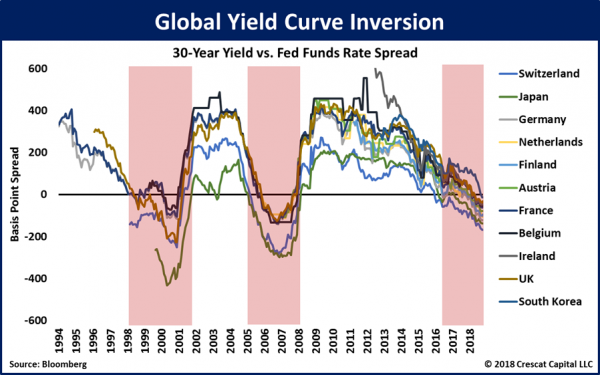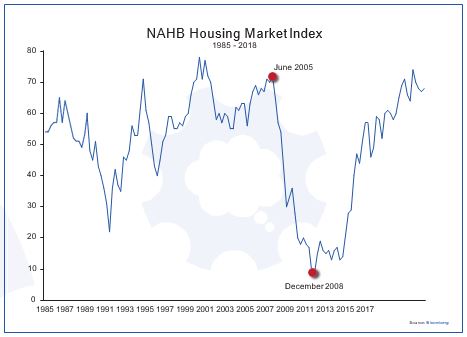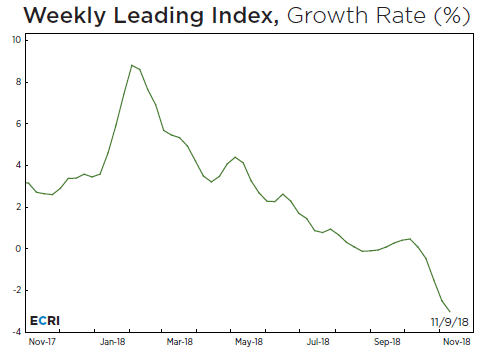Doug Noland writes…What ever happened to “Six Sigma”? GE was one of the most beloved and hyped S&P500 stocks during the late-nineties Bubble Era. With “visionary” Jack Welch at the helm, GE was being transformed into a New Age industrial powerhouse – epitomizing the greater revolution of the U.S. economy into a technology and services juggernaut.
GE evolved into a major financial services conglomerate, riding the multi-decade wave of easy high-powered contemporary finance and central bank backstops. GE Capital assets came to surpass $630 billion, providing the majority of GE earnings. Wall Street was ecstatic – and loath to question anything. GE certainly had few rivals when it came to robust and reliable earnings growth. Street analysts could easily model quarterly EPS (earnings per share) growth, and GE would predictably beat estimates – like clockwork. Bull markets create genius.
It’s only fitting. With a multi-decade Credit Bubble having passed a momentous inflection point, there is now mounting concern for GE’s future. Welch’s successor, Jeffrey Immelt, announced in 2015 that GE would largely divest GE Capital assets. These kinds of things rarely work well in reverse. Easy “money” spurs rapid expansions (and regrettable acquisitions), while liquidation phases invariably unfold in much less hospitable backdrops. Immelt’s reputation lies in tatters, and GE today struggles to generate positive earnings and cash-flow.
When markets are booming and cheap Credit remains readily available, Wall Street is content to overlook operating cash flow and balance sheet/capital structure issues. Heck, a ton of money is made lending to, brokering loans for and providing investment banking services to big borrowers. That has been the case for the better part of the past decade (or three). No longer, it appears, as rather suddenly balance sheets and debt matter.
After ending 1994 with Total Liabilities (TL) of $158 billion (total equity $28bn), GE TL closed the nineties at $357 billion. Over the subsequent five boom years, TL increased to $382 billion, $425 billion, $507 billion, $563 billion and then 2004’s $627 billion. TL peaked in Q2 2008 at $720 billion (total equity $127bn). A slimmed down GE ended Q3 2018 with TL of $263 billion supported by $48 billion of Total Equity. GE finished the quarter with Short-Term Debt of $15.2 billion and Long-Term Debt of $100 billion.
GE CDS (Credit default swap) prices surged 24 bps Friday and 86 bps for the week, to 259 bps. This was after beginning 2018 at 41 bps. It’s worth noting that GE CDS closed this week at the highest level since the Fed “exit strategy” mini-panic back in 2011. But rather than commencing an exit from its bloated crisis-era balance sheet, the Fed proceeded over the next three years to double holdings again, to $4.5 TN. This extended GE’s lease on life, along with the fortunes of scores of aggressive borrowers. Perhaps a $9.0 TN Fed balance sheet could save GE.
Most of GE’s long-term debt is rated BBB+, “investment grade” but only a couple notches from high-yield (BB+). The worry is that downgrades will push GE bonds to junk, forcing liquidation by funds and holders restricted to investment-grade holdings. “Moneyness of Risk Assets” has been a key analytical construct throughout this reflationary cycle (an evolution of “Moneyness of Credit” from the mortgage finance Bubble period). Fed (and global central bank) rate, QE, and market backstop policies incentivized (coerced) savers into the risk markets, especially in perceived lower-risk equities and fixed-income. With market yields way below investment return bogeys, many (pensions managers) were compelled to boost returns with leverage. Literally Trillions flowed into perceived safe and liquid “money-like” ETF shares. The flood of “money” into (higher yielding vs. CDs and Treasuries) investment-grade ETF products ensured the easiest Credit Availability imaginable for companies to borrower for capital investment or, more often, stock buybacks and M&A.
Read More
http://creditbubblebulletin.blogspot.com/2018/11/weekly-commentary-canary-in-credit.html



